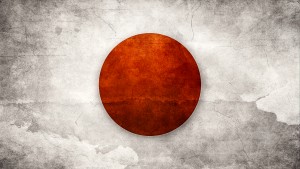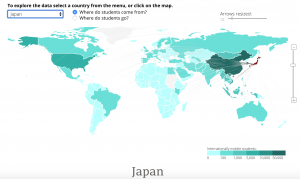Japan
- A comprehensive site for studying in Japan with a searchable database
- 86 National Universities
- 93 Public Universities
- 607 Private Universities
- Download the Student Guide to Studying in Japan which includes a listing of all programs taught in English.
- Direct Entry into your major:
-
- Not sure what you want to study? Try this tool which allows you to enter you primary courses (it is designed for A-Levels, but you can put in your three Higher Levels for IB or Advanced Placement courses).
- Looking for a deeper exploration of career possibilities? Career Explorer offers one of the most comprehensive and interesting set of reports after answer questions for about 30 Minutes. And it is completely free.
- Find English-based Undergraduate and Postgraduate degree programs available at Japanese universities.
- Super helpful guide from ASIJ.
- Gateway to study in Japan
- Information on studying in Japan for both Japanese and international students.

Download NACAC’s Guide to Applying to Japan
Keypoints
- Most program start in April.
- Back in 2004, only 3 universities offered programs in English. Now many more–28 Universities. The number of foreign students at Japan’s universities rose 12 percent to 267,042 last year, suggesting a target of 300,000 international students by 2020 will be met.
- Note: Some programs exclude Japanese Citizens. There is a lack of clarity what to do with dual-Citizens.
- For students LIVING in Japan, they must be 18 before you start classes. No exceptions. But for students outside of Japan, age is not a consideration.
- Students can work 28 hours a week as students. It is becoming easier to stay and work after graduation.
How to apply to Japanese Universities
- No centralized system and application; no centralized due date. No documents will be accepted if late.
- Application brochures (details: paperclips and red pens). Read whole application brochure entirely–15 to 50 pages. They are very specific, from use red pens or do not staple, glossy photos.
- Application periods (up to four…more about this with other warnings), from October to May. Some may allow you to apply to multiple rounds. Depends on the universities.
- School documents need to certified by school stamp including
- Certificate of expected graduation (legal name and birthdate)
- Letters of recommendation
- Transcript
- Testing. Most universities will require/accept
- SAT or ACT
- SAT subject tests
- Ap scores
- IB predicted grades. 49% of Japanese overseas applications were IB compared to 18% in the USA and 12% in Britain. Domestic Japanese 23% entered universities in Japan compared to 32% in US and 17% in Britain.
- TOEFL (minimum requirement)–one university even requires it of every student, even native speakers.
- On Campus Interviews may be required
- Hefty deposit payments and incompatible deadlines for payment (first semester tuition–up to $8,000). Here is information on scholarships.
- Information for current student: Japan Study Support
Background reading
- Why Are Fewer Young Japanese Studying Abroad?
- Restructuring at National Universities: Implications for the Future of Higher Learning
- Globalization and Higher Education Reforms in Japan: The Obstacles to Greater International Competitiveness
- The Japanese returnee experience: factors that affect reentry
Webinar with CIALFO on applying to Japan
Applying to Japan (International Programs) from Cialfo on Vimeo.
Check out UNESCO’s interactive map
